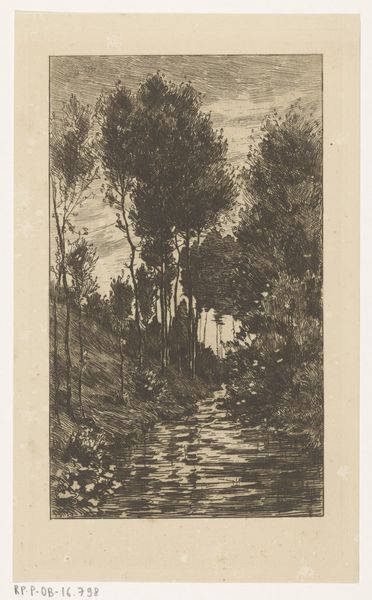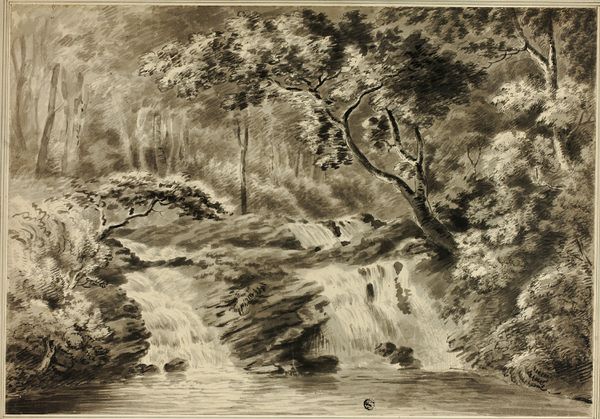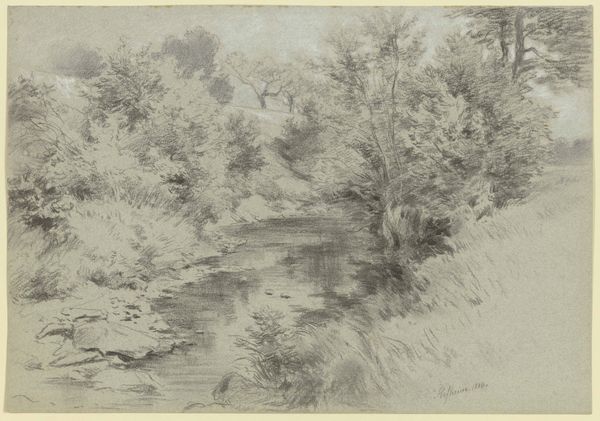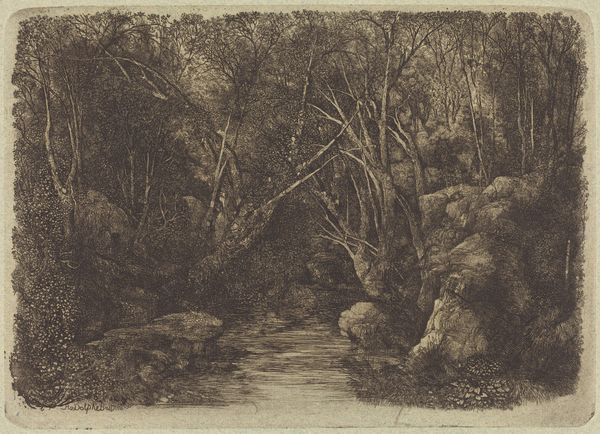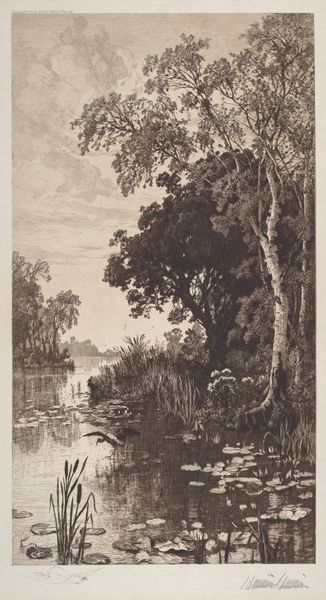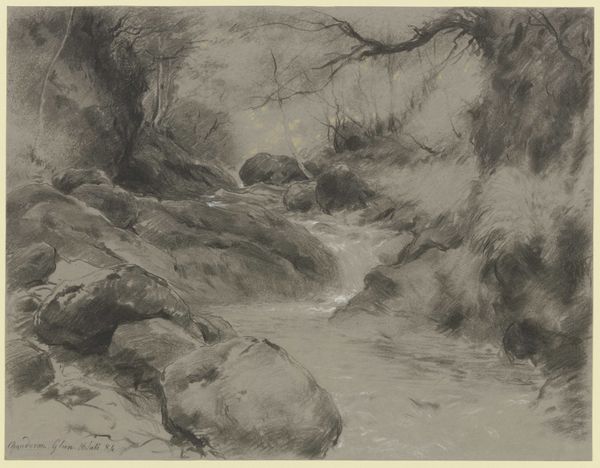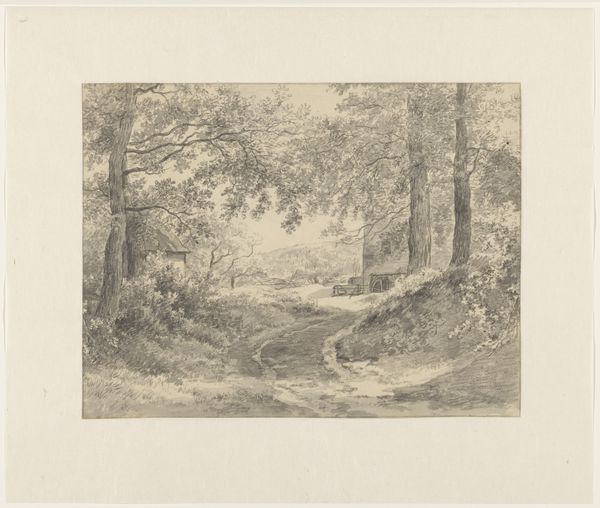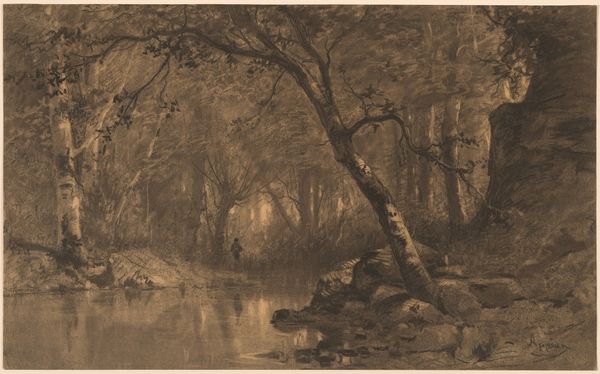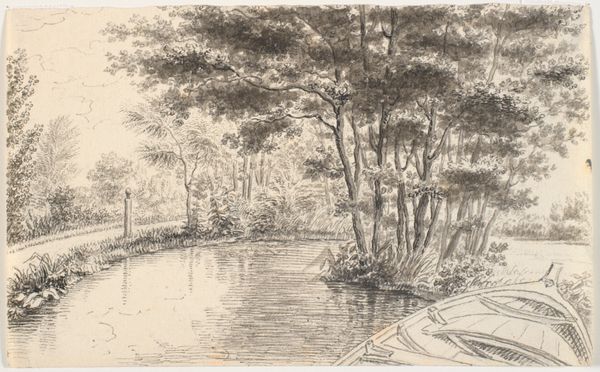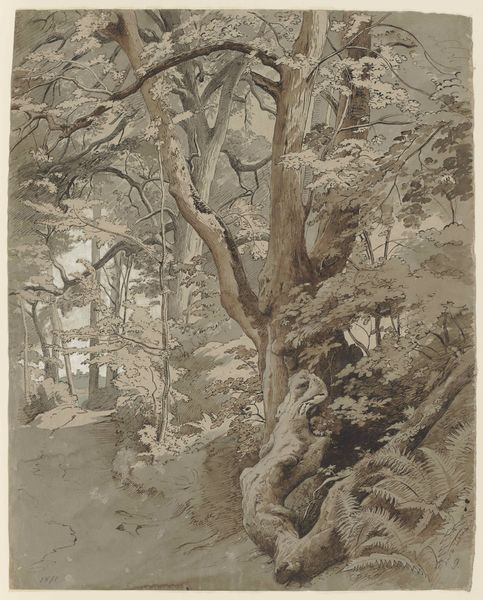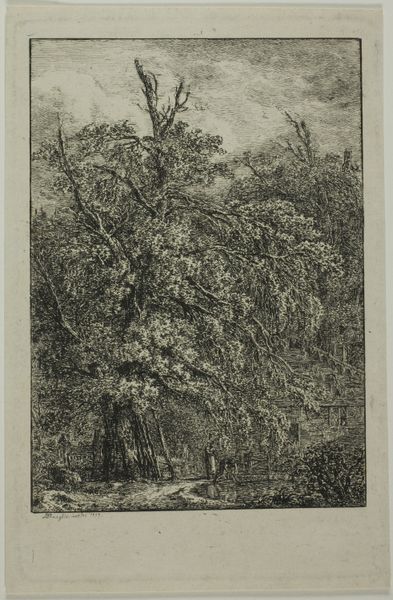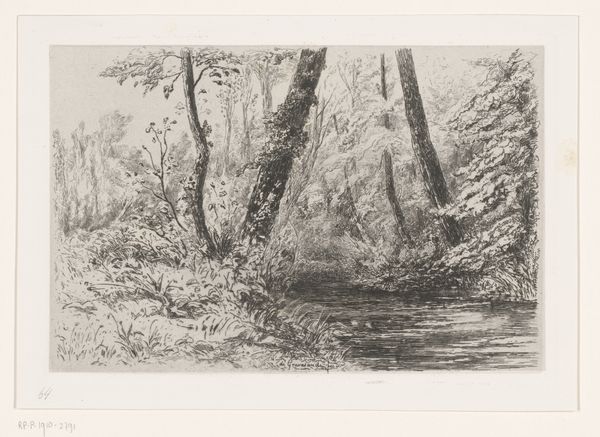
drawing, print, plein-air, paper, ink, pencil
#
drawing
# print
#
impressionism
#
plein-air
#
pencil sketch
#
landscape
#
paper
#
ink
#
pencil
#
watercolour illustration
#
watercolor
#
realism
Dimensions: Sheet: 12 1/2 × 9 3/8 in. (31.8 × 23.8 cm)
Copyright: Public Domain
Curator: Immediately I'm struck by the delicacy of the brushstrokes in this work, conveying such detail. Editor: I agree. There's a dreamlike quality too, with the soft grey tones and diffused light filtering through the trees. We are looking at "Forest at Clisson," a pencil, pen and brown ink drawing over graphite, touched with watercolor, made by François-Louis Français around 1890. It’s currently held at The Metropolitan Museum of Art. Curator: It’s interesting to consider the materiality here. The choice of humble materials—pencil, ink, paper—contradicts the often monumental scale and elevated subject matter typically associated with “high art” landscapes of that time. Editor: That’s a key point. This feels more intimate, a direct record of Français' encounter with this location. Clisson, located in the Loire-Atlantique region of France, had become something of an artist’s colony by this period. Curator: The layering of media speaks to process as well. The initial graphite sketch establishes form, followed by delicate ink work adding definition, then subtly brought to life with minimal touches of watercolor, carefully modulating tones to mimic shadow and light. Were such supplies locally sourced? Did this forest attract a particular market for landscape art? Editor: Doubtless its picturesque appeal did attract a market, feeding the growing art tourism trend. Picturesque landscapes served as signifiers of bourgeois sensibilities and connection with nature, fueling travel. This drawing would have fit perfectly in the tourism-oriented markets, shaped by exhibitions. Curator: But that doesn’t necessarily diminish the artistry here. This artwork becomes less about grand statements of nation or identity, but, as you pointed out, a genuine pursuit of sensory impressions and how they translate materially into representation. Editor: It certainly offers an insightful glimpse into the popular landscape imagery and tastes of its time, a moment when both artists and their audiences were increasingly embracing direct sensory experience as a primary form of knowledge and aesthetic appreciation. The piece quietly underscores the democratizing influence of printmaking on landscape art during this period. Curator: I leave with a deepened appreciation for the thoughtful making that went into what seems, at first glance, to be merely a fleeting sketch. Editor: I agree. "Forest at Clisson" serves as a window onto a fascinating nexus of artistic production, popular taste, and cultural geography during the late 19th century.
Comments
No comments
Be the first to comment and join the conversation on the ultimate creative platform.

